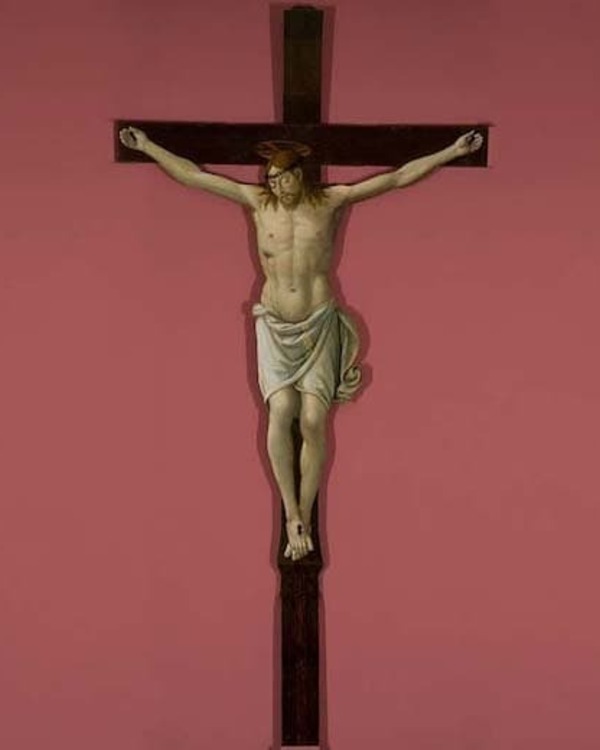Processional Cross
This 15th-century processional cross, painted by Florentine artist Cosimo Rosselli, provided Italian Catholics with an image of Christ to follow on holy days.
Nearly every renaissance-era Italian church owned its own crucifix, which they would parade down the street on saints’ days and religious feasts. The congregation would attach a long staff to the cross to hold it aloft, so that the faithful could see the image of Christ as it passed by. This particular crucifix measures over five feet from bottom to top, so its large size increased its visibility. However, the thin wood panels that comprise the cross ensured that it was not too heavy to carry.
Once the procession finished its route through the city and entered the church, they often placed the cross at the front of the sanctuary. In a position near the altar, crucifixes invited the congregation to ponder Christ’s sacrifice during the service.
Although artisans crafted some 15th-century processional crosses from crystal or precious metals, most were made of wood, like this one. Churches hired well-known painters, such as Cosimo Rosselli, to bring the simple, wooden forms of these crucifixes to life.
Cosimo Rosselli learned to paint in the 1450s in the workshop of Neri di Bicci, before starting his own studio in Florence, Italy. In the nearly 50 years he worked, he produced almost exclusively religious artwork.
In the 1470s and 1480s, at the high point of his career, Rosselli created a number of frescoes in Florence and Rome. The Vatican even selected him to paint four scenes in the Sistine Chapel, which depicted the Crossing of the Red Sea, Moses with the Tables of the Law and the Golden Calf, the Sermon on the Mount, and the Last Supper.
